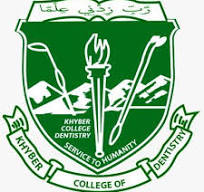PATIENT AND PARENT MOTIVATION FOR ORTHODONTIC TREATMENT
DOI:
https://doi.org/10.33279/jkcd.v6i02.217Keywords:
Motivation, orthodontic treatment, malocclusionAbstract
Objective: The aim of this study was to determine patient and parents/guardian motivation for seeking orthodontic treatment and the influence of age and gender.
Material and Methods: The sample comprised 92 subjects divided into three groups ;aged ranged from 7–10 years,11-18 years and 19-30 years. All participants completed same questionnaire, designed to assess motivation for orthodontic treatment. Statistical analysis was done using SPSS version 20.0. Pearson’s chi-square test were applied for comparing motivational factors among gender and three age groups.
Results: In this sample , the desire to improve aesthetics was the main motivational factor for undergoing orthodontics treatment. With increasing age, patients were more aware of their malocclusion. The motivation for treatment decreased with increasing age due to peers and surroundings. Ten percent of older patients were motivated by future improvements in health & only 5 per cent of the examined subjects started treatment because other children made fun of them. Influence of parents on patients decreased with increasing age. No statisticallysignificant difference by gender or age of the children was found.
Conclusions: Improvement in dental aesthetics was the principle motivational factor for the adoloscents (48 per cent), their parents/guardians (17 per cent), and adult patients (34 per cent) seeking orthodontic treatment.
Downloads
Published
How to Cite
Issue
Section
License
Copyright (c) 2016 Nayab Hassan, Ghulam Rasool, Aneela Nausheen, Samia Rahman, Tahira Hussain

This work is licensed under a Creative Commons Attribution-NonCommercial-NoDerivatives 4.0 International License.
You are free to:
- Share — copy and redistribute the material in any medium or format
- Adapt — remix, transform, and build upon the material
- The licensor cannot revoke these freedoms as long as you follow the license terms.
Under the following terms:
- Attribution — You must give appropriate credit , provide a link to the license, and indicate if changes were made . You may do so in any reasonable manner, but not in any way that suggests the licensor endorses you or your use.
- NonCommercial — You may not use the material for commercial purposes .
- No additional restrictions — You may not apply legal terms or technological measures that legally restrict others from doing anything the license permits.









